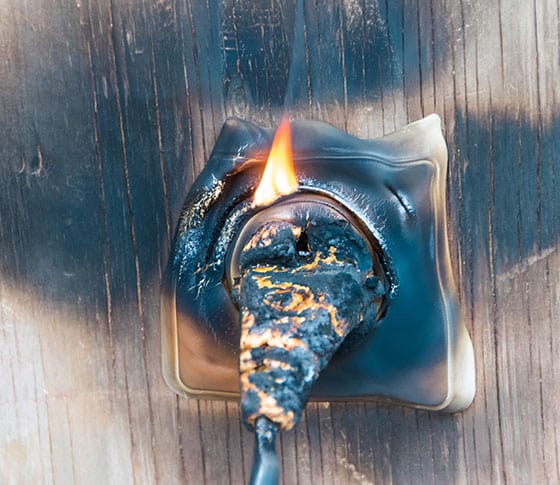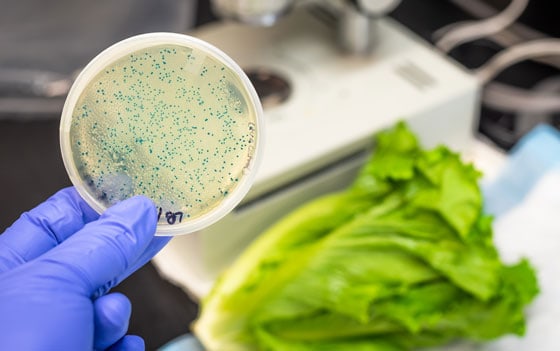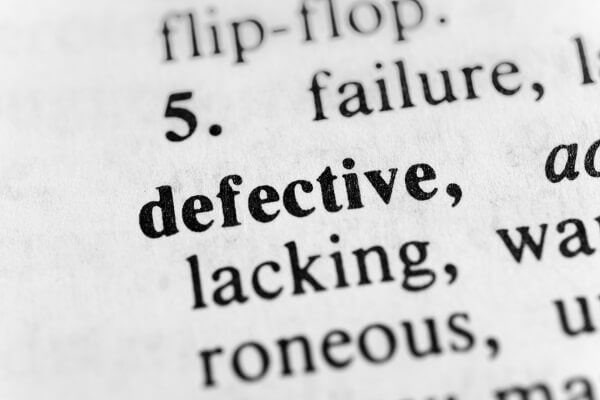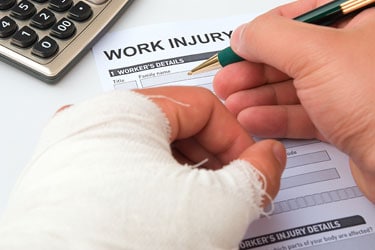Have You Been Injured Due to a Defective Product?
Bluestein Attorneys can help you navigate with personal injury claims caused by defective products.
Products liability is the area of law that deals with defective products and the harm they cause. Consumers bring tens of thousands of product liability cases each year, both individually and as class action members. The United States is a consumer-driven economy. Americans spend more than $10 trillion annually on consumer goods ranging from essentials such as food and transportation to non-essentials like tech and luxury goods. Consumer spending makes up 70% of our gross domestic product (GDP).
Consumer products are expected to safely enhance our quality of life, and most do. Some products, however, don’t meet expectations. Beyond not working correctly, these products may contain defects that cause injuries and property damages.
1. What Qualifies as a Defective Product Case?
Defective Product liability law defines defective products as a result of a manufacturer or seller being held liable for placing a defective product into the hands of a consumer
When you’ve been injured by a defective product, it may be difficult to know where to turn. Should you simply try to return the product? Who’s responsible for medical costs if you were injured? Should you file a lawsuit? If so, who can be named in the suit?
In South Carolina, those who have been injured or experienced illness due to defective products they’ve purchased have the right to bring a products liability claim to court.
Products which are commonly defective, causing injuries or death, include: vehicles and/or their parts, children’s toys and playground equipment, children’s products such as child safety seats, cribs and strollers, space heaters, smoke and carbon monoxide detectors, batteries, gas cans, prescription and over-the-counter (OTC) medications, safety devices such as earplugs, commercial manufacturing equipment, table saws, lawn equipment, gas grills, food contaminated with bacteria or undeclared allergens, workplace machinery or products, and electronic devices.
Let’s look at the basics of defective product liability in South Carolina, what you’ll need to do to prove your claim, and what steps you should take in the event of injury or illness in this situation.
2. What Types of Defects Are Considered in a Product Liability Case?
There are 3 major types of defects that pertain to a defective product case.
3. What Types of Damages Are Related to Defective Product Cases?
Damages related to defective product cases can be divided into two categories: Economic and Non-Economic losses.
If the user of a defective product has suffered harms and losses as a result of the defective product, then the user can seek recovery of compensatory damages.
What Do Compensatory Damages in a Defective Product Lawsuit Cover?
Compensatory damages can be further divided into two subcategories:
-
Economic losses are those that are easily calculable into monetary dollar amounts. Non-economic losses are those that are relatively more difficult to calculate as they are more subjective
What Do Economic Losses Include?
Economic damages in a defective products claim may often cover the following types of losses:
- Past Medical Expenses: These may include hospital and doctor bills, pharmaceutical and medicine bills, physical therapy, etc.
- Future Medical Expenses: In case of serious injury, the user may require additional medical treatment well into the future and potentially for the rest of the user’s life. A plaintiff can seek to recover the projected expense of these future medical treatment needs.
- Lost Wages: If the injury caused the plaintiff to miss work or lose profits in the past as a result of the injury and has lost earning potential into the future, the defendant may have to shoulder these expenses as well.
- Property Damage: It is common for a defective product to cause damage to property (for example, with defective garden tools, automobiles, etc.). If the product caused destruction to property, this may be included in the compensatory damages award as well.
- Household services
- Out-of-pocket expenses

What Do Non-Economic Losses Include?
People who are seriously injured may encounter pain every time they perform an activity that healthy people take for granted, such as helping their children put on clothes for the day, driving to work, or standing for an hour to cook dinner. Serious injuries often result in a plaintiff being unable to enjoy the activities he or she was previously able to enjoy. Non-economic losses are often called “non-monetary losses,” or sometimes, “general damages.” These types of damages can include:
- Pain and suffering,
- Emotional anguish
- Loss of enjoyment of life
- Permanent Disability or disfigurement
- Worsening of a pre-existing condition
Since there is no direct economic loss and no hard evidence of bills or receipts on which to base the award, it can be difficult for juries to assign a monetary value to the abstract and subjective losses.
4. What Must I Prove in Order to Win My Defective Product Liability Lawsuit?
You Must Fulfill Three Burdens of Proof
There are three burdens of proof placed on the injured individual bringing a products liability claim against a manufacturer:
- Prove you suffered injuries due to a defect.
- Prove the product was defective.
- Prove failure to warn.
As a user, it can be difficult to step into the complex world of product liability law without the help of a practiced attorney.
For this reason, it’s in your best interests to set aside time to talk with an experienced lawyer immediately. Click below to read more on how to prove you were injured by a defective product.
5. What Are the Standards For Defective Product Liability Law in South Carolina?

There are several elements that must be proved to be successful in a defective product liability case.
All types of defective product claims require the user to prove the following:
- The plaintiff was injured by the product as a result of the product’s defectiveness.
- The product was in the same condition when it injured you as it was when you first purchased or received it from the other party.
- The product was in unreasonably dangerous defective condition. The standard for “unreasonably dangerous” is slightly different depending on the type of claim the user is pursuing.
There is no statute of limitations specific to products liability in South Carolina. The statute of limitations is essentially the same as in any personal injury or wrongful death statute — three years from the time the injured party knew or should have known that the defective product was responsible for the injury..
As soon as you are aware that a defective product caused injuries or illness, contact a legal representative to discuss your options.
6. Who’s Liable if I’m Injured or Damaged by a Defective Product?
If you’ve been injured by a defective product, here’s how to identify all potential defendants in your product liability case.
One of the first things you’ll need to do is identify which people and companies might be liable and then name them as defendants in your claim.
Unfortunately, depending on the product, identifying all the parties that may be liable for your injury can be complicated.
As a general principle, any and all parties involved in the chain of distribution (the path that the product takes from manufacture to distribution to the customers) are responsible if the injury-causing product was defective.
7. How Do Recalls Affect a Defective Product Injury Claim?
A Recall Does Not Automatically Make a Manufacturer Liable or Get Them Off the Hook.
Many times, manufacturers will catch a potentially widespread product defect on their own, but other times government agencies, such as the Food and Drug Administration (FDA) or the Consumer Product Safety Commission (CPSC), will bring the defect to the manufacturer’s attention. Typically, the manufacturer will then issue its own voluntary recall. If the manufacturer does not do so, the CPSC or FDA may issue a recall. A notice will typically be sent out to all distributors and sellers of the products, as well as all known purchasers, to the extent that it is possible. Notices will also typically be placed in trade journals and provided to the general media, depending on the extent of the recall. The recall will instruct the customers how to have the product repaired or replaced and will warn of the danger posed by the defect.
While many courts will allow evidence of a recall to support the claim that the product was defective, such evidence does not make a defendant manufacturer automatically liable in a civil lawsuit.
A plaintiff must still prove the elements of a product liability case – that the product was defective and that the defect caused his or her injuries. Circumstantial evidence of a recall can help establish that the kind of defect the plaintiff is alleging existed when the plaintiff was injured, but additional direct evidence, like expert witness testimony and photos of the actual product, will typically still be required.
On the other hand, a manufacturer cannot use a recall to defeat any and every claim brought against it. The manufacturer must prove that the plaintiff directly received notice of the recall and that the contents adequately warned the plaintiff of the dangers posed by the defective product.
A broadly issued recall, unaccompanied by successful efforts to direct the recall notice to the plaintiff, is insufficient. Also, the manufacturer cannot defeat the plaintiff’s suit by blaming a distributor or seller for not providing the notice directly to the customer — although the manufacturer may be able to sue the distributor or seller afterward, depending on the facts of the case.

8. How Do I File a Defective Product Liability Claim?
It is very important to document and gather as much information as possible.
Seek medical care immediately. We cannot emphasize this enough, and you’ll notice that this suggestion often comes up in our blogs. Deferring treatment or choosing not to seek medical care makes it more difficult to prove your claim, but it also increases your risk of serious injury or illness, as many seemingly minor issues may turn out to be far more serious if not treated promptly.
Seek medical care as soon as possible, and ask for copies of all your treatment records to be given to you during your appointment. We recommend having two copies — one to share with your legal representative and one to keep for your own records at home.
Preserve the product. Experts are almost always involved in products liability cases and one of the first things the expert will want to do to begin the expert’s investigation is inspect the defective product. Preserving the defective product for future inspection is a critical first step. If the product cannot be preserved, detailed pictures of the product become even more important.
Speak with a legal representative. A legal representative will be able to speak with you about your unique situation, determine how you were injured or made ill by a defective product, and inform you about your options. Bring any documentation regarding medical care or treatment needed, the receipt of purchase for the defective product if you have it, and any paperwork that will help you to prove negligence on the part of the at-fault party.
Remember — Not Every Situation Goes to Court
Many clients injured by defective products are concerned about having to “take a case to court,” worried that the costs will be more than the end benefit of receiving the compensation they are due. Not all litigation ends in court — in fact, most litigation takes place outside the courtroom. Your legal representative may be able to negotiate on your behalf and find a compensation amount or conclusion that is satisfactory for all parties without ever having to step foot in a courtroom.





